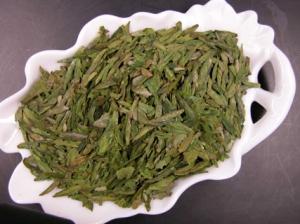Lessons in Enjoying Tea
Instead of drinking my daily 8 cups of water, I’ve kept myself hydrated (and warm) this winter with tea. I once thought making tea was as simple as boiling water. Oh, how wrong was I. Everything I now know about tea I learned onMalian Dao,a mile-long street in Beijing exclusively devoted to the wholesale of tea. When my legs were tired, I picked a random store and asked the sales clerk topin chaor tea taste. What I thought would be a 20-minute errand turned into a three-hour lesson in how to enjoy a cup of tea.
I asked to try green, jasmine, and pu’er teas. A woman in ornate silk qipao dress served me a few of each kind of tea. In wine, not all Pinot Grigios are equal. Similarly, a single type of tea can range widely in quality and price tag. The best tea is a personal choice discovered only by tasting lots. And so we did, beginning with green tea.
Step 1. She started by heating the water kettle. To accentuate the tea’s qualities, the water should be at about 70 degrees C for green tea and hotter for the more fermented teas.
Step 2. She then sprinkled a small palmful of tea leaves in the teapot. She filled it with water, waited 30 seconds, and poured the liquid out. It seemed like a waste, but she explained the first pot doesn’t express the tea’s full flavor.
Step 3. She rinsed the teacups with hot water, a necessary but oft-overlooked step that brings out the tea flavor.
Step 4. She soaked the tea for no longer than 2 minutes, or just long enough so that the green tea gave off a subtle green hue.
She also explained tea trends in China: molihua cha (or jasmine tea) is for fashionable young women, green tea is for older people and traditionalists, and pu’er cha is for people on diets. Who knew the kind of tea you drank broadcasted so much. I ultimately settled on the longjing green tea, with individually pressed green tea leaves grown in the southern province of Zhejiang and a gentle clarifying taste that lasted long after the teacup was empty. Does my tea choice make me classic or grandmotherly? You choose.
***
This week’s show will re-air last year’s ‘Studio 360 in Japan‘ episode. To get Japan on your mind, listen to Studio 360’s Jenny Lawton describe the ritual art of serving chado or tea in Japan:
